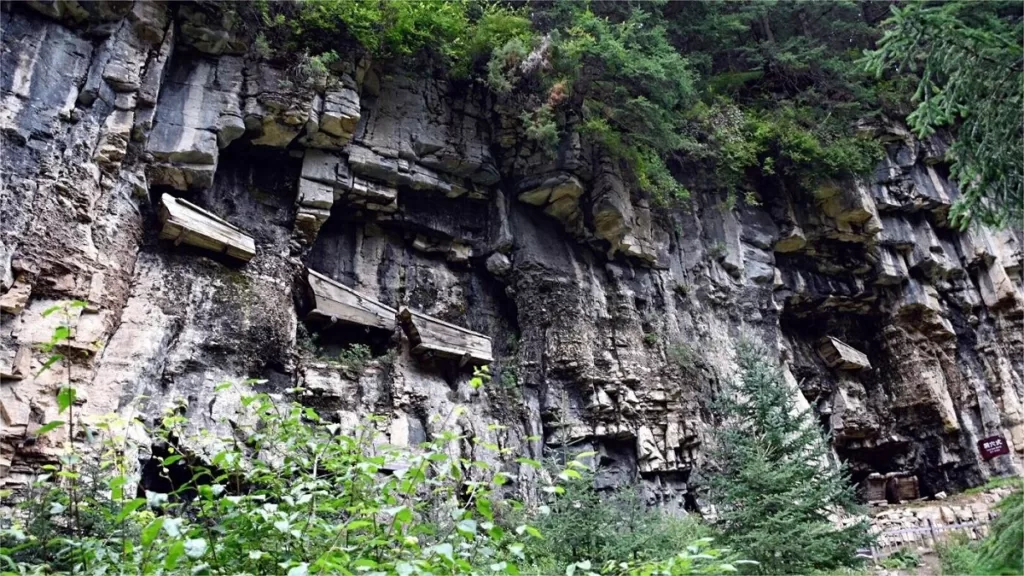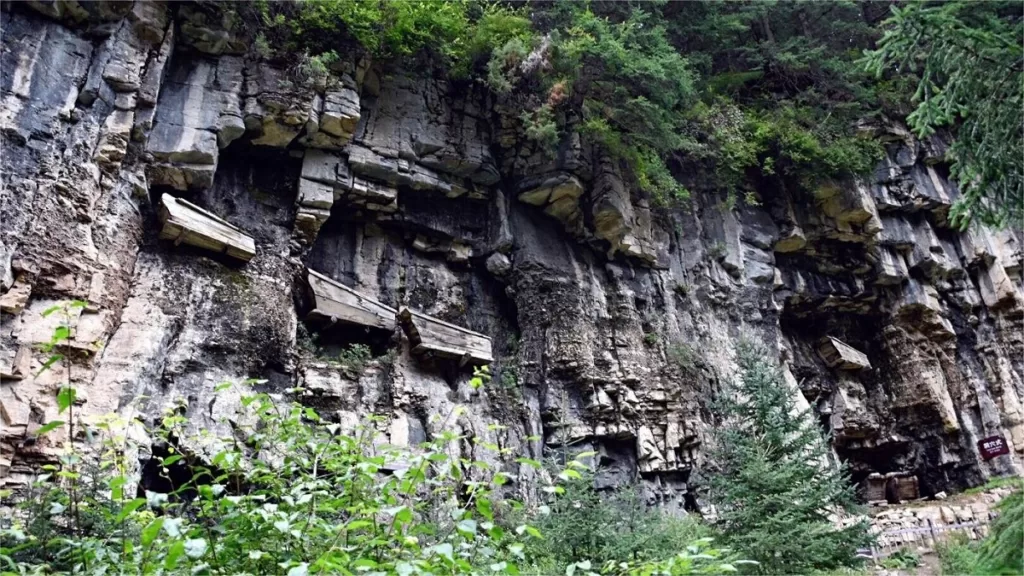Висячие гробы в Трех ущельях в Китае


Hanging Coffins in the Three Gorges, also known as “悬棺” (Xuán Guān) in Chinese, is a fascinating cultural phenomenon found in the vicinity of the Three Gorges region. This unique burial practice is also known by different names such as “船棺” (chuán guān or boat coffins) and “岩棺” (yán guān or cliff coffins), reflecting the diverse geography of the area. Notable locations where hanging coffins can be found include the Coffin Wood Gorge and Windbox Gorge in Qutang Gorge, Bawu Gorge and Dicui Gorge along the Daning River, Jingzhu Dam in Wuxi County upstream of the Daning River, and the Bingshu Baojian Gorge in Xiling Gorge.
The practice of hanging coffins is a unique custom of the Ba people, an ancient ethnic group in the region. Several explanations exist for the ancient practice of hanging coffins. One suggests that it was done to bestow blessings of wealth and prosperity upon the descendants, symbolically referred to as “高棺” (gāo guān or high coffin), resembling the term for high-ranking officials. Another interpretation is that it aimed to protect the remains of the deceased from both human and animal intrusion. Yet another perspective suggests that it was a filial act, as descendants of Puren people, to show utmost respect to their parents by placing the coffins in elevated locations, demonstrating the highest form of filial piety.
Upon close examination, the hanging coffins in the Three Gorges area can be categorized into two main types. Firstly, some coffins are placed within natural caves at a certain height above the ground, often tens of meters above. Secondly, others are positioned within man-made caves or niches carved into the steep cliffs. In 1979, Professor Lin Xiang from the History Department of Sichuan University extracted a hanging coffin from the rock walls of the Jingzhu Dam area. This particular coffin, estimated to be over two thousand years old and belonging to the ancient Ba state, was made of nanmu wood, a material known for its fine texture, waterproof properties, and resistance to decay. The coffin, measuring 2.1 meters in length, showcased exquisite craftsmanship, with its lid resembling a crescent moon and a precise interlocking design without the use of nails.
The burial sites for hanging coffins were carefully chosen on the sheer cliffs of the Yangtze River, characterized by a short duration of direct sunlight (about two hours per day), a slope of approximately 20 degrees, minimal water accumulation, good ventilation, and protection from rain. These locations are secluded and have seen minimal human disturbance, contributing to the preservation of the coffins over the centuries.
Intriguingly, one of the hanging coffins extracted from the Jingzhu Dam area contained the remains of a boy around thirteen or fourteen years old and a girl aged fifteen or sixteen. The girl displayed evidence of blunt force trauma to the back of her skull, suggesting a violent end. Based on this, it is inferred that the boy was a privileged son of high status, while the girl was a sacrificial companion. Artifacts such as copper belt hooks and copper bracelets accompanied the burial, and the coffin is now on display at the Wushan County Cultural Relics Exhibition Hall on Pipa Island in the Little Three Gorges of the Daning River.
As for the method of placing the coffins in their elevated positions, there are three main theories. One proposes the creation of a temporary path to transport the coffins, which was subsequently destroyed. Another suggests that the coffins were delivered during periods of rising water levels, taking advantage of increased accessibility. The last theory involves the use of wooden winches, ropes, directional pulleys, and similar tools to hoist the coffins into their positions.
The hanging coffins in the Three Gorges region stand as a testament to ancient burial practices, reflecting the rich cultural and historical heritage of the area. The meticulous craftsmanship, the symbolism behind the practice, and the challenging logistics of placement contribute to the enduring fascination with these enigmatic burial sites.